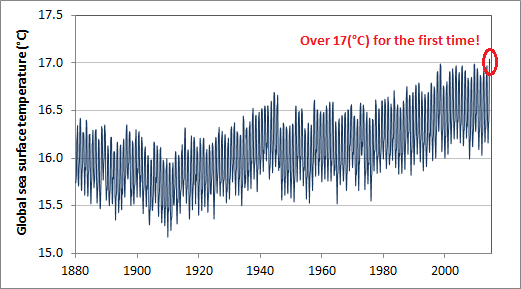The proposed climate agreement between the U.S. and China will put the Canadian government’s promise to harmonize with U.S. policy to the test.
Under the new agreement, the U.S. would limit greenhouse gas emissions to 26-28% below 2005 levels by the year 2025. That is a step beyond the existing U.S. target, shared by Canada, of 17% below 2005 levels by the year 2020.
The U.S. is roughly on pace to meet its 2020 target, with emissions for 2012, the most recent year available, only 8% above the target and further reductions possible due to automobile regulation, coal regulations and the shift from coal to natural gas for energy.
Canada is not; emissions were 13% above the 2020 target in 2012 and are projected to increase over the next two decades largely because of activities in the oil sands sector. According to the Environment Canada projections, Canada’s emissions are projected to reach 762 Mt of CO2e by the year 2020, 9% above the 2012 level and 25% above the 2020 target.
The new agreement will increase the gap between U.S. and Canadian ambitions. Canadian greenhouse gas emissions are projected to be one third above the new target for the year 2025 agreed to by President Obama (assuming the Environment Canada projection for 2025 is halfway between the 2020 – 762 Mt – and 2030 – 815 Mt).
The core of the gap is the oil sands. This is not environmental rhetoric. This is math, based on the government’s own projections, submitted to the United Nations according to international reporting agreements. Roughly three-quarters of the projected growth in Canadian emissions by 2030 comes from the oil sands sector, with the remaining growth in industries like rail and heavy-duty trucks that can be related to the oil and gas activity.
Without addressing the expected growth in greenhouse gas emissions from the oil sands, Canada will not come close to even stabilizing emissions in the next couple decades, let alone keeping up with action by the U.S. and the rest of the developed world. At some point, our leaders need to address the elephant in the room.



 “Gaffers who claim that winters were harder when they were boys are quite right—except that the change is too small to be detected except by instruments and statistics in the hands of professional meteorologists. Weather men have no doubt that the world at least for the time being is growing warmer.”
“Gaffers who claim that winters were harder when they were boys are quite right—except that the change is too small to be detected except by instruments and statistics in the hands of professional meteorologists. Weather men have no doubt that the world at least for the time being is growing warmer.”